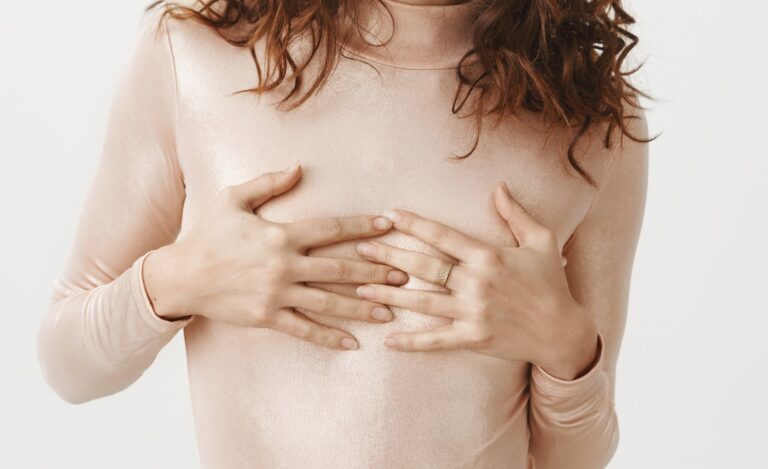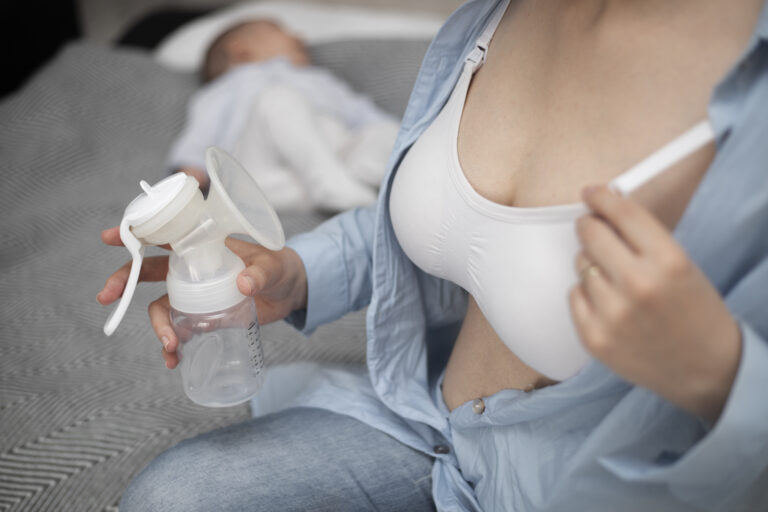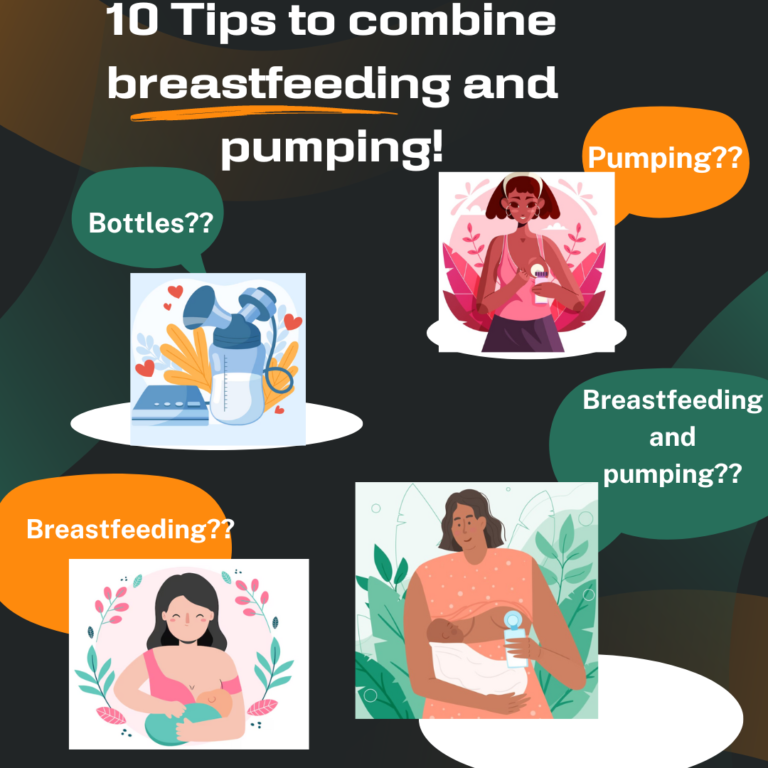Good Positioning of Breastfeeding: 10 Best Breastfeeding Positions to Ensure a Proper Attachment
Breastfeeding is a natural and essential way to nourish and bond with your newborn. It provides numerous health benefits for both the baby and the mother. However, to ensure a successful breastfeeding journey, it is crucial to adopt the right breastfeeding positions for newborns. Proper positioning not only enhances the breastfeeding experience but also helps reduce common issues like gas and discomfort for the baby.

In this article, we will explore the 10 best breastfeeding positions for newborns and the importance of maintaining a good latch and attachment during feeding.
What is breastfeeding?
Breastfeeding is the act of providing breast milk to a newborn directly from the mother’s breast. This natural process offers optimal nutrition for infants and helps boost their immune systems, promoting overall health and well-being. Additionally, breastfeeding creates a strong emotional bond between the mother and the baby.
The process of breastfeeding begins shortly after childbirth when the mother’s body starts producing colostrum, yellowish, thick, and nutrient-rich milk that serves as the baby’s first food. Colostrum is packed with antibodies and essential nutrients, helping to strengthen the baby’s immune system and providing protection against infections.
As breastfeeding continues, the mother’s milk changes in composition, transitioning from colostrum to mature milk. Mature breast milk contains the perfect combination of proteins, fats, carbohydrates, vitamins, and minerals, ensuring the baby’s healthy growth and development.
What are the 10 common breastfeeding positions?
There are several common feeding positions for breastfeeding, each offering unique benefits for both the baby and the mother. These positions cater to different needs, comfort levels, and breastfeeding challenges that may arise during the early stages of nursing. Here are ten common breastfeeding positions:

- Cradle Hold: This classic position involves holding the baby’s head with the crook of the arm on the same side as the nursing breast. The baby’s body lies across the mother’s front, supported by the opposite forearm. It’s a popular position that allows for eye contact and bonding with the baby.
- Cross-Cradle Hold: Similar to the cradle hold, the baby’s head is cradled in the opposite arm from the breast being used for feeding. This position offers more control for guiding the baby’s latch and is particularly helpful for newborns who need assistance with positioning.
- Football Hold: In this position, the baby’s body is tucked under the mother’s arm on the same side as the feeding breast, with their legs and feet pointing towards her back. This position is suitable for mothers who had a C-section or for babies who have difficulty latching.
- Side-Lying Position: This position is beneficial for nighttime feedings or when the mother wants to rest while nursing. Both the mother and the baby lie on their sides facing each other, and the baby latches onto the breast from this position.
- Laid-Back Position: Also known as the biological nurturing position, the mother reclines comfortably, and the baby is placed on her chest, allowing them to use their natural instincts to find the breast and latch.
- Koala Hold: In this position, the baby is held upright, facing the mother like a koala clinging to a tree. This position can be helpful for babies with reflux or those who prefer a more upright feeding position.
- Cross-Over Hold: With the baby cradled across the body, the opposite hand is used to support and guide the baby to latch. This position is useful for babies who struggle with latching on one breast.
- Side-Lying Latch: Similar to the side-lying position, the baby’s body faces away from the mother. This position can be helpful for babies with a shallow latch or for mothers with oversupply.
- Biological Nipple Position: This position allows the baby to naturally find the correct latch without much interference from the mother. The baby’s nose is in line with the nipple, making it easier for them to latch.
- Laid-Back Position on a Pillow: A variation of the laid-back position, where the mother uses pillows to support her back and achieve a comfortable angle for breastfeeding.
These different breastfeeding positions offer options for mothers and babies to find the most comfortable and effective way to nurse while promoting proper latch and attachment, leading to a successful and enjoyable breastfeeding experience for both
Breastfeeding positions to reduce gas
Some breastfeeding positions, such as the laid-back position and the football hold, can help reduce gas and colic in newborns. These positions allow for better digestion and prevent excessive air intake during feeding, minimizing discomfort for the baby.
Can I breastfeed in the side-lying position after a C-section?
Yes, breastfeeding in the side-lying position can be a comfortable and viable option for mothers, including those who have had a C-section. In fact, the side-lying position is often recommended for mothers recovering from a cesarean birth, as it reduces pressure on the incision site and allows for better rest during feeding sessions.
Here are some tips for breastfeeding in the side-lying position after a C-section:
- Use Pillows for Support: Arrange pillows behind your back and between your knees to provide support and maintain a comfortable position while lying on your side.
- Position Baby Close: Place your baby on their side, facing you, with their nose aligned with your nipple. You can use your arm to support the baby’s head and guide them to latch.
- Support Your Breasts: Use your free hand to support your breast and guide it gently toward the baby’s mouth for a proper latch.
- Burp Baby When Needed: After feeding on one breast, it’s essential to burp the baby before switching sides, especially if they are prone to gas or colic.
- Ensure a Safe Sleep Surface: Breastfeed on a firm mattress with no soft
Safe places for breastfeeding
Breastfeeding can be physically and emotionally tiring for new mothers, especially during the early days when feeding sessions are frequent and may last for extended periods. Finding safe and comfortable places to breastfeed when tired is essential to ensure both the mother and the baby have a positive feeding experience. Here are some additional safe places for breastfeeding when tired:
- Nursery or Baby’s Room: Create a cozy and relaxing environment in the nursery or the baby’s room. Set up a comfortable chair or a rocking chair with cushions or pillows for support. Keep essential items like water, snacks, burp cloths, and nursing pads nearby, so you don’t have to constantly get up during feedings.
- Comfortable Couch or Recliner: If you spend a lot of time in the living room, make sure you have a comfortable couch or recliner where you can breastfeed. Position it near a side table to have all the necessities within reach.
- Bedside Feeding: For nighttime feedings, consider keeping a bassinet or a crib next to your bed. This way, you can nurse lying down or in a side-lying position, allowing both you and the baby to rest comfortably during nighttime feedings.
- Nursing Station: Create a designated nursing station in your home where you can retreat to breastfeed in peace. Make it a relaxing space with dimmed lighting, soft music, and calming decor to help you unwind during feeding sessions.
- Quiet Corner: If you prefer privacy, find a quiet corner in your home where you can breastfeed without disturbances. You can set up a small nursing station with a comfortable chair, nursing pillow, and soft lighting.
- Baby’s Nursery Rocking Chair: A rocking chair in the baby’s nursery can be a wonderful spot for breastfeeding. The gentle rocking motion can soothe both the mother and the baby, making the feeding experience more enjoyable.
- Outdoors in a Private Space: If you’re comfortable breastfeeding outdoors, find a secluded spot in your garden or a private corner of a park where you can enjoy the fresh air and natural surroundings while nursing.
- Support Groups or Lactation Rooms: Some community centers, hospitals, or workplaces offer lactation rooms or support groups for breastfeeding mothers. These spaces are designed to provide privacy and comfort for nursing mothers.
- Baby Carrier or Wrap: Using a baby carrier or wrap allows you to breastfeed while on the go or when you need to attend to other tasks. It provides a hands-free option for breastfeeding, which can be convenient when you’re tired and need to multitask.
- Home Nursery Glider: A nursery glider or a rocking chair specifically designed for breastfeeding can provide excellent back support and comfort during feeding sessions.
Remember that finding a comfortable and safe place to breastfeed when tired is crucial for your well-being and your baby’s comfort. Listen to your body and rest whenever possible, as self-care is essential during this special bonding time with your little one.
Importance of proper breastfeeding position
roper breastfeeding position ensures that the baby latches correctly, allowing them to effectively draw milk from the breast. A good latch prevents nipple soreness and engorgement for the mother while providing sufficient nutrition for the baby. Additionally, correct positioning minimizes the risk of issues like gas, colic, and reflux in newborns.
What should I do if I experience pain while breastfeeding?
Experiencing pain while breastfeeding is not uncommon, especially in the initial days when both you and your baby are still learning how to breastfeed effectively. It’s essential to address the pain promptly to ensure a positive and comfortable breastfeeding experience for both you and your baby. Here are some steps you can take if you experience pain while breastfeeding:
- Check the Latch: Pain during breastfeeding is often caused by an improper latch. Ensure that your baby is latching onto your breast correctly. The baby’s mouth should cover a significant portion of the areola, not just the nipple. The lips should be flanged outward, forming a “fish lips” shape.
- Break the Suction Gently: If you feel pain during feeding, insert your clean finger into the corner of the baby’s mouth to break the suction before unlatching them. This prevents further discomfort.
- Re-Latch the Baby: After breaking the suction, reposition the baby and encourage them to latch again. You may need to try different breastfeeding positions to find the most comfortable one for you and your baby.
- Check for Tongue Tie: Sometimes, pain during breastfeeding can be caused by tongue-tie or lip-tie in the baby. These conditions restrict the baby’s ability to latch properly. If you suspect this might be the issue, consult a lactation consultant or pediatrician for an evaluation.
- Seek Help from a Lactation Consultant: If you continue to experience pain despite adjusting the latch and trying different positions, consider seeking help from a lactation consultant. They can observe a feeding session, provide guidance, and offer personalized tips to improve your breastfeeding experience.
- Use Nipple Cream: Applying lanolin or a nipple cream specifically designed for breastfeeding can help soothe and moisturize sore nipples.
- Take Breaks and Rest: Breastfeeding can be demanding, and it’s essential to take breaks and rest whenever possible. Try alternating breastfeeding with bottle-feeding pumped breast milk to give your nipples some relief.
- Use Warm Compresses: Applying warm compresses to your breasts before breastfeeding can help alleviate pain and encourage letdown.
- Stay Hydrated and Nourished: Ensure you’re staying hydrated and eating a balanced diet to support breastfeeding and overall well-being.
- Be Patient: Remember that both you and your baby are learning, and it may take time to establish a comfortable breastfeeding routine. Be patient with yourself and seek support from your partner, family, or friends.
If the pain persists or worsens, don’t hesitate to contact your healthcare provider or a lactation consultant for further evaluation and assistance. Proper support and guidance can make a significant difference in resolving breastfeeding pain and ensuring a successful breastfeeding journey.
Signs of poor attachment in breastfeeding
Identifying signs of poor attachment is crucial for successful breastfeeding. Some common indicators include:
- Painful nursing for the mother
- Clicking or smacking noises during feeding
- Insufficient wet diapers or slow weight gain in the baby
- Nipple damage or misshapen nipples after feeding
- Frequent feedings that don’t seem satisfying for the baby
Conclusion
Breastfeeding positions for newborns play a pivotal role in the overall breastfeeding experience. Finding the right position not only enhances the bond between the mother and the baby but also ensures the baby receives proper nutrition while reducing common issues like gas and colic. Remember, a good latch and attachment are essential for a successful breastfeeding journey, so take the time to find the positions that work best for both you and your baby.
References
Goyal RC, Banginwar AS, Ziyo F, Toweir AA. Breastfeeding practices: Positioning, attachment (latch-on) and effective suckling – A hospital-based study in Libya. J Family Community Med. 2011 May;18(2):74-9. doi: 10.4103/2230-8229.83372. PMID: 21897915; PMCID: PMC3159232.
Nancy S, Sindhuri R, Arunagirinathan A, Dongre AR. Breastfeeding Positioning and Attachment among Postnatal Mothers: A Mixed Methods Study in a Tertiary Care Hospital in Puducherry, South India. Indian J Community Med. 2022 Jan-Mar;47(1):120-124. doi: 10.4103/ijcm.ijcm_859_21. Epub 2022 Mar 16. PMID: 35368469; PMCID: PMC8971882.
Tiruye, G., Mesfin, F., Geda, B. et al. Breastfeeding technique and associated factors among breastfeeding mothers in Harar city, Eastern Ethiopia. Int Breastfeed J 13, 5 (2018). https://doi.org/10.1186/s13006-018-0147-z
Frequently asked questions
- What is the best breastfeeding position for reducing gas in newborns?
The laid-back position and the football hold are particularly helpful for reducing gas and colic in newborns
- How do I know if my baby has a good latch?
A good latch involves the baby’s mouth covering most of the areola, with the lips flanged out. The baby’s chin should be touching the breast, and there should be minimal discomfort for the mother during feeding.
- How often should I breastfeed my newborn?
Newborns should be breastfed on demand, which typically means feeding every 2 to 3 hours or whenever the baby shows hunger cues, such as rooting or sucking on their hands.
















+ There are no comments
Add yours